|
I know this article is late, being a month into the release of Forgotten Realms, but I still wanted to get it written and out there since I greatly enjoy stats. Halfway through Kaldheim, I was destroyed by a totally off-meta surprise win deck. I liked it so much that I figured out how to build one of my own. As of this writing, it's been nearly two set releases and I am still playing the same deck. What is this fun deck? I just call it "Walls". You can read more about it HERE . There's a couple variants of it, but I've found mine works well enough to leave it alone. There's also been no new additions to it in the past few sets, so I just keep on keeping on. Anyway, I am still enjoying this deck, it's still fast and fun to play and the win rate is still acceptable enough to keep rolling with it. Spreadsheet Updates Since I didn't post a post-gameplay stats for Kaldheim, some of the new spreadsheet changes were missed. Since then I have added a dashboard that is fed data from each of the various pages in my spreadsheet. It gives me a nice clean look of all the data in one single place. This is what my dashboard looks like. The following screenshots are all clips from this dashboard. One major change I had to add to this set's spreadsheet was a Mystical Archive draft/collection sheet. This was kept separate from the regular draft sheet since the MA cards aren't actually part of the Strixhaven main set. I basically just copied my collection total sheet, and modified it for just MA cards. The MA cards were not calculated into any of my Strixhaven card totals. You can find more of all of this info in the Strixhaven Post Collection stats article. Gameplay Stats All stats recorded via hand after each match and double checked using MTGAHelper. My customized spreadsheet then calculated the rest and all of the running totals. My only goal was 4 wins per day, and keeping the daily quests from backing up. I completed every event, including FNM @ Home and all other extracurricular free events that were offered. Gameplay dates range from 4/15/21 to 7/8/21. I was pretty happy with my 63% win rate for the Walls deck. I'm still playing it a month into Forgotten Realms. The total time was about an hour less, I think one of the events overlapped one of my other items like Brawl or something. The next table shows actual game play time. You can see I didn't really play any other decks. Collection Stats
I hope you enjoyed looking over these stats as much as I enjoyed recording them and working on my spreadsheet.
If you have any questions or comments, feel free to contact me.
2 Comments
Original Article...I was happily playing my Historic Elves this month when out of nowhere a similar deck to what I am about to show you surprised me. It beat me turn 3-4 and I was powerless against it. It was irritated that such jank should beat my carefully crafted Elves deck that I had to go look at my tracker to see what I just got beat by. I only saw a few cards, but quickly formed my own list that seems to work pretty well for me. Here's what I came up with: The Deck
How does it work?It's fairly simple. Slam down harmless 0/x creatures, then drop Assault Formation and attack all-in for the surprise win. You absolutely must hard mulligan for Assault Formation in your opening hand. There will be games where you won't get it so just concede and start another game. This is a pretty forgiving deck. I've mulliganed down to Assault Formation and 2 lands several times now and still pulled off a fast win. Lets go over what each card is best used for:
Ornithopter is an excellent free drop, especially on turn 1. It's also our only other flyer to add some evasion in to the deck. Shorecomber Crab and Aegis Turtle are both big beefy creatures that seem so innocent on the first turn or two. Once Assault Formation is played, they are serious threats that are hard to remove and can steam roll over most of your opponent's early creatures.
Assault Formation is the main card of this deck. Without it, your creatures are absolutely useless. You must have Assault Formation in your opening hand. Mulligan until you do. If you have too few cards, just concede and start the next game. It's rare you don't get it by at least the 2nd or 3rd mulligan. Just make sure you leave yourself with at least 2 lands of different colors and you can still play Assault Formation, then just whatever creatures you draw. I've won several games with a 3 card starting hand. The deck is pretty forgiving to get you going. The downside to this deck is that if Assault Formation is destroyed or removed somehow, you may as well concede, as the rest of the game will be spent waiting to draw another, and your opponent will have recovered by then. Players don't typically run much Enchantment removal, so you're usually safe from this. It does happen once in a while though. Tower Defense can be used in 3 different ways. The first is the obvious one-shot kill. If your opponent doesn't bother blocking because you don't have enough for lethal, then Tower Defense will almost always be a fast lethal strike. Secondly, you can use it as a defensive move, both blocking and attacking. If the opponent has creatures much larger than you that you are having a hard time playing around, you can use this to beef up your big creatures to kill their big creatures. The same goes for blocking, let them attack in with their big creatures, and then play this. Third, you can use this to avoid a non-destructive board wipe. Quite a few board wipes just do mass damage. This can boost your creatures above the minimum toughness needed to beat most of these board wipes. Stern Dismissal can be used in multiple ways as well. Remove something in your way of attacking or an opponents enchantment, or use it to save your own Assault Formation enchantment from being destroyed, or one of your creatures. Because this deck moves very fast, we want to make sure we have fast mana. 20 mana seems to be plenty for this deck to work quickly. Keep in mind 70% of your cards are 1 mana. One playset of cards is 0 mana, and then your most important card is only 2 mana. You don't need a lot. Because you are trying to hit hard and fast and end the game by turn 4 or so, you want to make sure you always have mana available in the way of not using any tap lands. GamePlay ExamplesSo far after playing this deck daily for 9 days straight each morning, I have a decent 65% win rate in the BO1 Play queue. What surprises most people is the odd assortment of cards. I am playing both mono-green ramp cards and mono-blue mill cards, along with some random useless blockers. Most opponents don't think twice about it and just think it's either one of the two variants, when it's really neither one. Instead Assault Formation gets dropped and all of those useless creatures are suddenly a massive threat. This morning I went 4-0 in just 8:34 mins. Yesterday I went 4-2 in 15 minutes. The deck is fast. Here's some examples of what to expect with good opening hands. Game 1 - Against Shrines Turn 1 - Island, Ruin Crab Turn 2 - Forest, Aboreal Grazer--> Breeding Pool, Aegis Turtle Turn 3 - Shorecomber Crab, Assault Formation, attack all in. Opponent didn't even get going yet with their shrines and instantly conceded. Game 2 - Against Zombies? Turn 1 - Island, Aegis Turtle, Ornithopter Turn 2 - Hinterland Harbor, Shorecomber Crab, Arboreal Grazer-->Breeding Pool Turn 3 - Hinterland Harbor, Assault Formation, attack all in. Opponent conceded with a few creatures and a saga out on the field. Game 3 - Against Mono White Angels/Lifegain Turn 1 - Breeding Pool, Arboreal Grazer-->Breeding Pool Turn 2 - Hinterland Harbor, Aegis Turtle, Merfolk Secret Keeper Turn 3 - Ornithopter, Assault Formation, attack all in, opponent didn't block Turn 4 - Attacked all in, Opponent didn't block since I did not have lethal and he was just getting his lifegain going. I then activated the Assault Formation ability to +1 all my creatures and killed him. Game 4 - Against Toski shennagins of some kind Turn 1 - Forest, Gilded Goose-->Food Token Turn 2 - Hinterland Harbor, Ruin Crab, Shorecomber Crab Turn 3 - Forest, Merfolk Secretkeeper, Assault Formation, Attack all in with no blocks. Turn 4 - Forest, Arboreal Grazer, attack all in. Opponent had critical mono green stuff out that he didn't want to die, and I did not have lethal showing. He did not block, so I activated Assault Formation's ability to +1 everything, and killed him. Now the next 2 games I lost. The first loss was because the opponent destroyed my Assault Formation. I waited 2 more turns and conceded. The second loss was because I got greedy and was just loading the board with all my creatures. I was going to drop Assault Formation on the next turn for a glorious attack, except the opponent looked at my hand and discarded my Assault Formation. Word to the wise, don't be greedy, get that thing down ASAP. The game above was a quick turn 3 win against the hard to beat mono white lifegain angels deck. I mulliganed down to 5 cards to get an Assault Formation and 2 lands in my hand. Turn 1 - Breeding Pool, Aegis Turtle, Ornithopter Turn 2 - Breeding Pool, Assault Formation, Attack. Turn 3 - drew a Tower Defense, I figured the opponent wasn't going to let his two key pieces die, so he didn't block. I played Tower Defense for lethal. Yes, that's a turn 3 win against that lifegain angels deck, with only 2 lands, and a 5 card starting hand. It's very forgiving! What Doesn't WorkIt does not play well against full on deathtouch decks unless you have enough flyers out to outlast the opponent. If not, just concede. It does not play well against Golgari decks that seem to find all the things to kill your stuff with, and then can also destroy your Assault Formation. Cards like Thought Seize and Assassin's Trophy is an immediate concede. Any control that takes your Assault Formation, such as Skyclave Apparition, or other white/blue enchantments that can steal your stuff. Just concede and start the next game. Obviously if you don't have a great opening hand and slam out a bunch of creatures and get overwhelmed by the opponent, then you may as well concede unless you can somehow kill all their stuff (Assault Formation ability or Tower Defense). I hit all of these examples the very next day and only got a 50% win rate. The day before I didn't see as much of these examples and ended the day with a 65% win rate. In conclusion...These are just examples of perfect opening hands. Even a bad opening hand can be mulliganed a couple times to become a good one and still be perfectly playable. I tried this deck out in the BO1 Historic Ladder, but only made it to mid silver before getting stuck with the more powerful meta decks, and that included a ton of losses. My win rate was not good in ladder play. This deck is more of fast deck to get your daily 4 or so wins in and move on. Anyway, I hope you found this deck tech fun, exciting and useful. Please let me know if you have any questions, comments or tweaks you can think of. I really enjoy off-meta decks that do well. Kaldheim releases tomorrow! Hooray! Zendikar was the set that made me quit playing Standard. I was so bored of the same decks every day, and I refuse to play tier1 control or any of those other controlish long game 3+ color decks. Thanks Triomes, thanks a lot. I don't find these decks fun to play against. I also don't see the fun in just denying my opponent from playing the majority of the game while I do nothing but wait until I have enough lands to play my one big thing. It's just boring gameplay to me. I was also bored of mono red, as I played two complete set releases with mono-red. I wanted something new with more action, so I started playing Historic. Welcome to Historic! The land of opportunity and limitless fun. Or so I thought... Historic, I realized quickly, was also the same 4 decks over and over again. But, they're different decks! It was new and fun for a while, then turned into the same thing I hated standard for. Most days it's either U/W control, Rakdos Sacrifice or some combo of 3 color deck that all does the same thing, which is counter all your spells and board wipe you on turn 4 every game. They're pretty easy to play around because they're all exactly the same. It just comes down to luck of the draw and if you get to go first or not. I quickly started conceding after a turn or two after I saw what was up. I love playing magic, but if I don't get to actually play the game on my end, then it's no fun, so I concede and find the next opponent, hoping they don't have one of these specific decks, or that my hand is better this time, or the opponent misses a land drop or card draw or something to give me the edge. Despite all of that, I had more fun. I think it's because I was able to play a deck architype that was competitive that I enjoyed playing. I went with Historic Elves. It's all creatures except for a set of Collected Company, which a large majority of the time is really just equal to two more creatures. So basically a 100% creature deck. I love the synergy of the elves. They either give themselves mana or buff themselves. Some duplicate themselves to make more elves or more buffs. My finisher for a while was Craterhoof Behemoth, until later on I switched over to Ghalta, Primal Hunger. Ghalta was just easier to cast early on, especially since the last month of gameplay has been a large majority of just U/W control, so I was never able to get Craterhoof out anymore. Ghalta can be dropped as early as turn 3-4, hoping to miss the big board wipe or a counterspell early on. So with all that said, I started with Zendikar standard on the Arena release day, playing Mono White Lifegain then changed to Mono White Enchantments for a week. By early October I switched to Historic with my old Historic Merfolk deck and finally by mid October I had crafted the Historic Elves deck and have been tweaking it ever since. I really, really enjoy the Elves deck. So much so, I built a commander deck out of it for my weekly gaming group. I'm also considering buying the new elves commander precon for Kaldheim. Gameplay StatsWell, you came here for stats, so here's my Zendikar Rising Gameplay Stats. All stats recorded via hand after each match and double checked using MTGAHelper. My customized spreadsheet then calculated the rest and all of the running totals. My only goal was 4 wins per day, and keeping the daily quests from backing up. I completed every event, including FNM @ Home and all other extracurricular free events that were offered. Gameplay dates range from 9/17/20 to 1/27/21. We can see here I played Historic Elves for the majority of the duration of the Zendikar Rising set. Since my weekly play group started playing in-person again over the late summer, we stopped playing direct play games online, so that's why that one has zero games. Historic Elves did pretty well IMO, with a 58% win rate, and I even enjoyed many of the losses or quickly conceded and moved to the next game, so really not much time loss there for that kind of rate.
The only other stats I didn't show here was my ranked play rank. My best Standard rank was silver 4. My best Limited rank was bronze 1. I'm not much into the grindy nature of ranked play, so I stick to the casual queues and play out my daily 4 wins each day.
I wish I could say I had fun with Zendikar Rising, but as soon as I switched to Historic, I rarely saw a ZNR card. We'll see what this new set brings. I am looking forward to more new Elves and a Viking theme. That new Kaldheim showcase art is stunning! I have been waiting for today to arrive for some months now, ever since the latest Magic: The Gathering (MTG) set, Throne of Eldraine, was announced. This new set is unique in that it encompasses two major themes: Fairy Tales and Camelot. This is especially exciting because it's one of the first themes that my wife was truly excited about. She casually plays MTG with me, but wished there was a more appealing theme or set that interested her. This is it! Another unique first for this set is the new "showcase" border art they are using on certain cards as an alternate version that you have a small chance of getting in a booster pack. These new card frames feature scrolling vine-work around the card's art, and many feature alternate art. These are collector pieces. They are absolutely stunning. I would love to buy lots of booster packs and boxes for this set, but it is not in our budget. Instead, I have been buying the full common play-sets every three months when new sets release as an affordable option to building my collection. Another affordable option for buying into new sets is to purchase the Planeswalker decks. Each of these decks includes the basic strategy of the set, some of the game's latest settings and characters and the newer mechanics. These decks are considered starter decks, and not something that are used at a competitive level. These are for the casual and new players that are wanting to pickup a fully working deck and play right out of the box. Throne of Eldraine offers only two Planeswalker decks this set, Oko, the Trickster and Rowan, Fearless Sparkmage. "Oko is a shapeshifting iconoclast, uncommonly clever even for a faerie, who prefers trickery and manipulation to all-out battle. Deploy evasive creatures and augment them at crucial moments to build and unstoppable force" states the back of the Oko, the Trickster box. Rowan, Fearless Sparkmage's boxes states, "As the daughter of a king, Rowan has trained extensively in both swordsmanship and etiquette- but she greatly prefers to solve her problems with a blade. Marshal an army of noble knights and assault your opponent with military precision." Each package contains one full, ready-to-play 60 card deck, as well as 2 booster packs for Throne of Eldraine and a code to unlock the full deck on Magic: The Gathering Arena, which is the digital version of the game on PC. Each deck retails for about $13. These decks contain a special foil Planeswalker and several supporting cards that are unique only to this deck, and not found in the rest of the full set. Game play was quite good for these two decks. I chose Oko and my wife chose Rowan. While it's clear that many of these cards are unplayable outside of this deck, you will have to look beyond that and think of this as a standalone product. That said, I thought the deck synergy worked very well and they both played nicely against each other. I was constantly countering my wife's creatures, while she was building up a strong army and leading the charge early on when she got Rowan out. Once Rowan came out, there was not much I could do to stop her. She pounded away at me while I continued to draw land after useless land and had no answers left to counter her attacks with. Aside from my brutal beating, I found that the game play was quite fun and we really enjoyed these decks. They will be played often. Since my wife is a casual player, I will be adding both of the Arena codes to her account so that she has more decks to play against me. The added value of the Arena codes are a really good value add to this product if you also play Arena, which we do. After playing, we got to cracking those booster packs! I was hoping to see at least one of the showcase cards, as I had not seen many get opened in some of the booster box openings I have been watching from some of my favorite Youtubers. I was not expecting much.
Instead, I was greeted with four showcase cards! I couldn't believe our luck! One of them is even a foil! As far as card value goes, we pulled a few $1 cards a few $2.50 cards. The foil Planeswalkers are worth about $8 each. I was most excited to pull the showcase cards though. Total value for each deck is: ~$19 Rowan, Fearless Sparkmage (~$9 deck + $6 booster packs + ~$4 Arena code) ~$22 Oko, the Trickster (~$12 deck + $6 booster packs + ~$4 Arena code) We picked each one up for $12.99 at our local game store. I would highly recommend these decks for any beginner, returning player or those that just play the occasional casual game of Magic. Many players think that virtual game items have no real world value. And they're absolutely right! The value you get from your purchased virtual items are strictly to let you enjoy the game more, be it changing the way something looks, using a more powerful item, or simply for bragging rights. That virtual item you bought brought you some kind of joy. However, what if there was a way that you could parallel your virtual items with real world items to find a real world value? After all, you most likely did spend real money on Magic: The Gathering Arena. Even if you did not, you can look at it as if someone gave you a large collection for free, just for playing. Since there actually is a direct comparison to a real world product in this virtual game environment, then this makes it easy to calculate what your in game virtual items are virtually worth. If you have not yet read my previous article on Throne of Eldraine Season Rewards and Real World Value, then check out that article HERE While that article goes very in depth on how values are calculated, fortunately you won't need to do any math at all to figure your collection value out. All that is needed is an Arena tracker to export your collection, a quick cleanup of the data, and then you can import it into another collection system to give you the values. Let's get started! TL:DR version
Getting StartedThis is not difficult if you are somewhat computer savvy, but if you are not very technical, you may want to skip this project. I am in no way sponsored or paid by any of the companies whose products I will be referring you to. I simply use them myself. Things you will need:
Installing a TrackerThere are many trackers available for Arena. You can find a quick table of features of the various trackers HERE to choose which one you want. Just make sure it includes a Collection Tracker and/or Browser. I use MTGArena.PRO. It's the most powerful one of all the trackers I've tested. For a full write-up of how to install MTGArena.Pro, click HERE (COMING SOON) Make sure that your tracker has synced itself with its website counterpart. To check this, log into the website for your tracker and check your card collection inventory to make sure everything is showing up correctly. Exporting your Collection Once your MTGArena.Pro client has synced itself, then you may now log into the website. Their site is located here: https://mtgarena.promtgarena.pro Once you log in:
An Export window will pop up, asking you to select a format to download to.
Cleaning up the Data Before we can import this into another system for pricing, we will need to clean up the data first. You may be asking, "But why can't I just import this into MTGGoldfish?". It is because MTGGoldfish will not let you bulk import a collection unless you pay for a premium membership. Since we want to find this out for free, we will be using another system.
Once the file is opened, we can see what MTGArena.Pro exported. You should see a spreadsheet with a few columns, such as the card name, the set it is from and the quantity. The only two columns we are concerned with are Card and Quantity.
If you wish to sort alphabetically and remove all the basic lands, you can. You may also remove the lands later after importing it into the pricing website.
We have one more cleanup step to perform. Open collections.csv in a simple text editor, such as Notepad. You will something like this: Note the commas between the card names. We need to remove all of these commas using the Replace tool in Notepad.
Now we need to log into EchoMTG. EchoMTG is a collection tracker for the physical MTG card-collecting world. It tracks and bases all of its values on TCGPlayer. Here is the address for EchoMTG: https://www.echomtg.com The free version only allows you to import 350 cards into its collection database. But there is a cool feature called Lists/Decks that allow for unlimited cards, without adding them to your collection. This will also show you the value of this list/deck.
Give your List/Deck a name in the field above Click on the Select File button, then find where you saved your collection.txt file
You can now click on your newly created list. Give it a few seconds for the card names to populate. Remember, there is probably 1000's of cards in here. As you can see from the image above, as of this writing, my MTG Arena virtual collection is worth virtually somewhere between $1,369-$2,576. Remove Basic Lands Due to the basic lands being imported, it automatically selected some of the vintage lands, which, in total, added about 150 cards to my list, totaling about $75 in value. Therefore, I would also just subtract this from whatever final value I came up with. Basic lands in Standard have little to no value. You could add in each land you have, but it is just not worth the effort. You could remove the basic lands from the spreadsheet earlier in the process, or once imported into EchoMTG, you can slowly click the - (minus sign) next to each of the 5 basic lands and remove them all. It all depends how tech savvy you are. The easier option is to just mouse over each of the basic lands and see what their value is. Looking at my example image below, you can see that it EchoMTG chose to import a Fifth Edition basic Island, which is worth quite a bit more than any basic land in Standard. For this example, multiply $.79 x 31 cards = $24.49 and subtract that from your total value. Do this for each of the other basic lands as well. Speaking of lands, if you have the full art basic lands for Unhinged or Zendikar,those are worth roughly $1 on average in the real world. Figure you probably bought 24 of each of them in real life, 24 of each full art basic lands (120 cards total) is worth another $60-$120. Double this if you have both sets. In Conclusion Pricing for EchoMTG is pulled from TCGPlayer. The values shown are between lowest market value and the average market value. Lowest value typically lists damaged or high play cards as well, so this may not be entirely accurate for near mint cards. Keep in mind the Average price includes those that have listings that are multiple times more than a card is worth, which can skew that number as well. You should probably just take the average of the two values for a more real world representation of what your collection is worth.
This pricing does not take your card styles into account either. Since the card styles are essentially "foils" in Arena, you can value them in this manner. Though, they now look like the extended art cards from Throne of Eldraine, so this would signifigantly increase the value over a foil. I hope you enjoyed this article. It was certainly fun to research and write! If you would like to see more articles such as this, please leave me a comment or contact me with more ideas. Back in July 2019, I bought out the remaining inventory of an MTG online reseller. This is the story of my massive MTG haul, how I sorted through it all, and all of the gems I found. Before you ask, yes, I do have lots of full pauper sets for sale! I enjoy a good bargain as much as the next person, and when it comes to gaming, that's no exception. Games are expensive. Especially collectible card games, such as Magic: The Gathering. As such, I am always on the lookout for deals on Craigslist, Facebook Marketplace and other sources. The Purchase While browsing on Craigslist, I came across someone selling an abnormally large collection of cards for a very cheap price. It was estimated to be around 60,000 cards, mostly common and uncommon. The gist of their story was, their store sold multiple products online, and collectible cards was just one of those items. They were looking to get out of the collectible card business and were liquidating their inventory. I was told this collection contained mostly standard bulk, with many full play common play sets and some rares scattered in. I quickly realized this was an amazing deal, so I took them up on their offer, and said I could pick it up the next day. The next morning I left the house at 7am and drove 3 hours to their location. On arrival, I was welcomed by one of the most friendly persons I have ever met. He was a fellow gamer, not only for Magic: The Gathering, but video games and other tabletop games as well. I'm glad for such a friendly person as I ended up spending over 2 hours there. When I arrived, this is what I was greeted to: I didn't fully realize just how large a collection 60,000 cards might be until we started loading them up. It was contained on 4+ book cases, the floor, the corner of the office, the entire table you see in the photo and then some. Their office space was located on the 2nd floor of an office complex, so thankfully they had a shopping cart and an elevator that came in very handy. I made roughly a dozen trips to the car and back over the next couple of hours. My new friend helped me the whole way. We chatted about video games, Magic, Munchkin and several other gaming related topics. I barely got everything loaded into my car. Every square inch was packed, the trunk, floors, seats, and the front passenger area were all packed with boxes upon boxes of cards! I graciously thanked the sellers for the awesome deal and the generous help in packing them all up and hauling them to the car with me. I then made the 3 hour trip back to home. Sorting After arriving at home, I had to quickly figure out what to do with everything. I knew I was going to need to go through and sort every single box and card. I sent the wife an apology text about all the boxes going in the living room and hallway for a couple weeks while I figured out where to put everything. After unloading the car, I decided that sorting by set was the best place to start. I organized everything in as neat a pile as I could. Half the cards were in the original flimsy display boxes, the other half was stored in a mix of large card storage boxes, bundle box deck boxes, shoe boxes and whatever else the previous owners had laying around to stick cards in. I cleaned out a section of my office, setup a folding table, laid a large tabletop neoprene play mat on top of it and got to sorting. After looking through quite a few boxes and spot checking others, I realized that except for color and set, nothing was sorted alphabetically. In order to find out what all was there, they needed to be in alphabetical order as well. This meant I was going to have to handle all 60,000+ cards one by one. Every. Single. Card. Thankfully there was a cool sorting tray that was included with everything. I had never got around to purchasing one of these sorting trays, as I don't typically buy collections this large. I am glad I got the opportunity to try it out, as it was a life saver in speed sorting and greatly decreased fatigue. I highly recommend one of these trays for anyone that likes to buy and sort any type of card collection. At first I wasn't sure where to put all the cards I had sorted. I didn't want to put them back in the flimsy booster box displays, but after realizing there was nowhere else to put them, I reluctantly put them back in the boxes they came out of. I had wanted to buy some storage boxes for them all, but then thought better of it when I remembered one of the main reasons I was buying all of these cards was to sell off everything I didn't keep. I would end up with a bunch of empty boxes once they were all gone, which was money wasted. I did need to get all of the cards out of the shoe boxes and deck boxes though, as those were not very efficient ways to store a massive amount of cards. I ended up buying a 10 pack of BCW 3200 card Monster Storage boxes. For the cards that came out of their matching set booster box, I just re-used those. For the cards that had no relevant set box, I used the large storage boxes. Thankfully quite a few large card storage boxes were holding many of these cards, so I was able to condense them all back into the boxes they came out of. Meanwhile, I sorted cards for a solid week and a half... Once I had finished sorted everything, it was time to find out how many sets I could make. I already had several friends that wanted to buy full playsets, so this was a good start. I realized I needed some smaller card storage boxes to put all the sets in for individual sale, so I ordered a 50 pack of BCW 400ct card storage boxes. On top of this, I would be re-using all of the bundle box deck boxes and empty booster boxes as well. While making up full sets was not nearly as difficult as the original sort project, it was still very time consuming. It still took several days to go back through all of them and figure out the maximum amount of sets I could make. As you saw from some of the previous pictures of the sorting process, you'll notice not all stacks are of equal size. This means I was only able to make full play sets from the cards with the shortest stacks. I went through every set, color by color, using the Scryfall database on my tablet as reference. Since the sorting tray was divided into 18 sections, I started by making a maximum of 18 playsets for each set. I made note of those sets that might have produced a few more playsets in case I ran out later on. Some sets only produced 3-4 full playsets. Others I was able to produce full playsets and then partial playsets, which were only missing a few cards each. I ended up with nearly 100 full common playsets, spanning 13 sets from Eldritch Moon to Ravnica Allegiance. There's even a few sets of Modern Masters, Eternal Masters and tons of Unstable! Some sets were missing a few valuable commons, so I added in all of the uncommons I had for each set to make up for it. Now, I need to sell everything off as quickly as I can. All of this was bought for three main reasons.
It took a couple weeks before I could finally remove everything from the hallways, living room and much of the floor space and table of my office. I got all the remaining left over cards up on my book shelves and everything else is all boxed and ready to sell! If you are interested in purchasing any of these sets, please contact me. If you are interested in pauper cubes or draft packs, let me know and I can make some in the set(s) of your choice. My Personal Collection In case you've made it this far, here is most my personal collection. This includes all of the non-land, non-token cards. That's 6 x 3200 card boxes. There is another 4 x 3200 card boxes full of tokens and land also that are not shown in this picture. This spans Unlimited through Core Set 2020.
My original collection was in 5 x 3200 card boxes, and now spans 10. I am only keeping playsets of each card, so cards beyond sets of 4 I put in another box for giving away. Anything valuable I keep in a separate box outside of what you see here so I don't lose track of them. As for valuable cards? I dug about 400 cards worth $860 in value out of all the bulk. I got quite a few mythics and rares, including lots of Planeswalkers, cards for Commander, tons of foils and some other cool stuff. I keep these and my reserved list cards all in a binder, and anything in a certain value range in a separate box. I will save further discussion of what all is in my collection to a future article. I hope you all found this journey as entertaining as I did. Thankfully reading about it was not nearly as time consuming as the actual project. |
Categories
All
Archives
August 2022
|
- Home
-
Abandoned Travels
-
Abandonments
>
- 2014-2015 >
-
2013
>
- CMX Construction
- Orange House 01
- Fertilizer Plant
- Egg Plant
- Box Plant
- Ellaville Bridge Revisited
- Gold Kist Farms Silos
- Lafayette House 03
- Columbia House 01
- Columbia Barn 01
- Cash's Towing
- Coastal Revisited
- Suwannee Shack
- Hernando House 01
- Lafayette House 02
- Lafayette House 01 Revisited
- Lafayette Chimney Revisited
- Lafayette Quarry Revisited
- Williston Urbex
- Elljay Garage
- 2012 >
- 2010-2011 >
- Travels >
- Nature >
- Water >
-
Abandonments
>
-
Games
- Food
-
VATS Sucks
- Stuff
- About













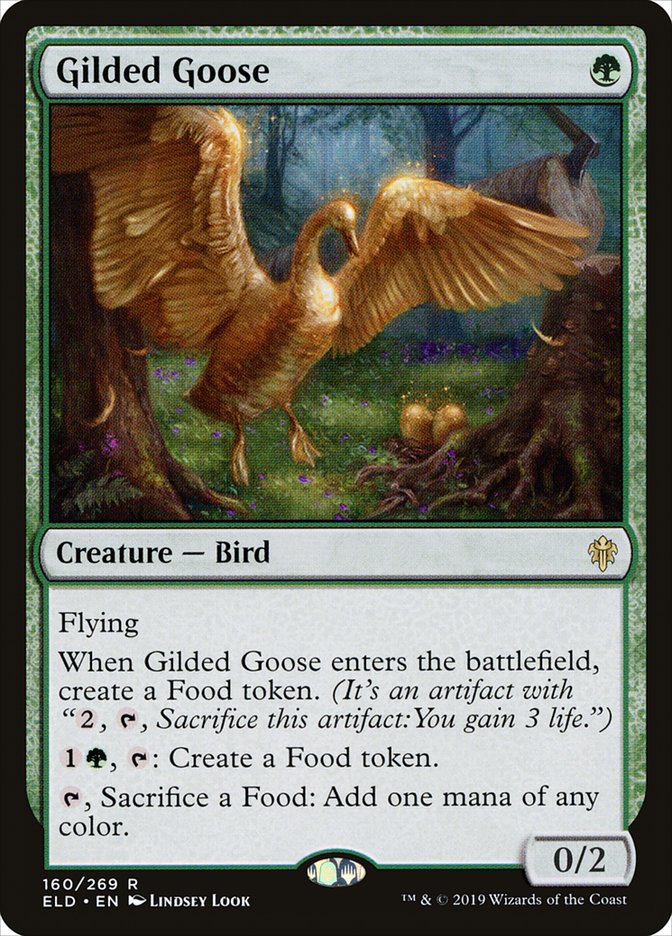



















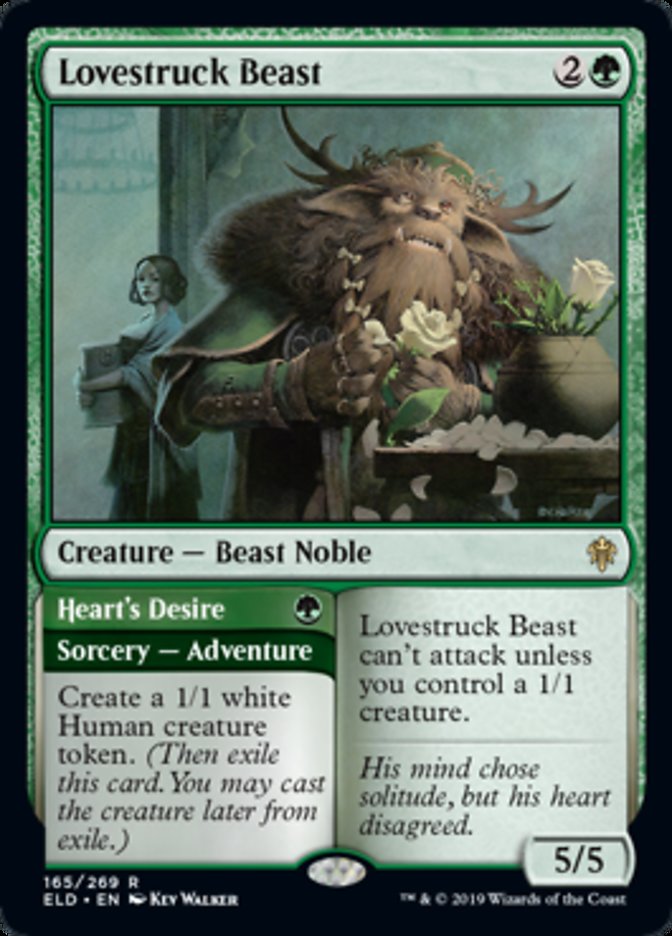

















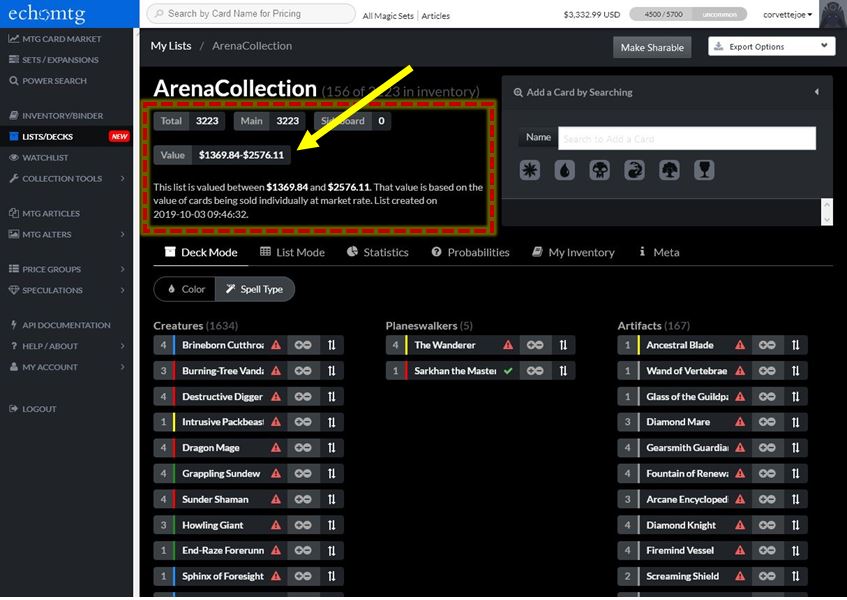
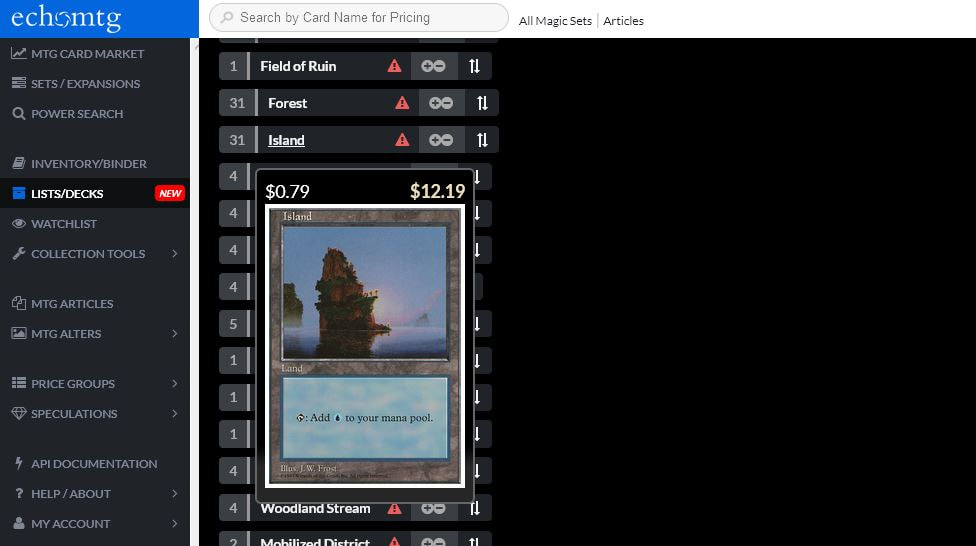


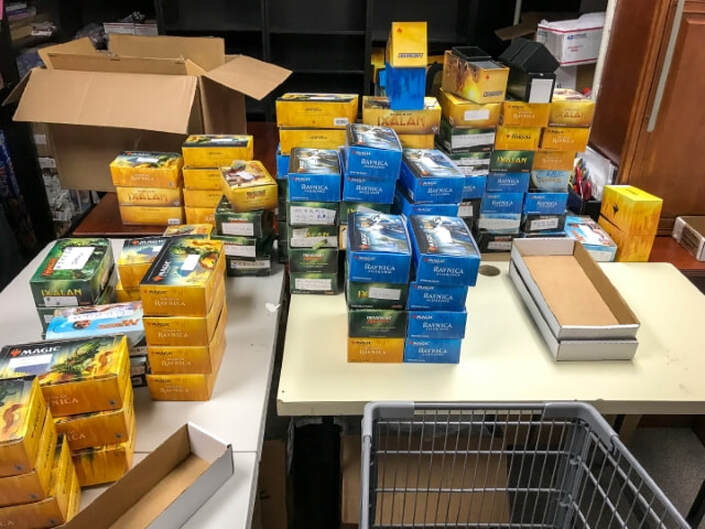










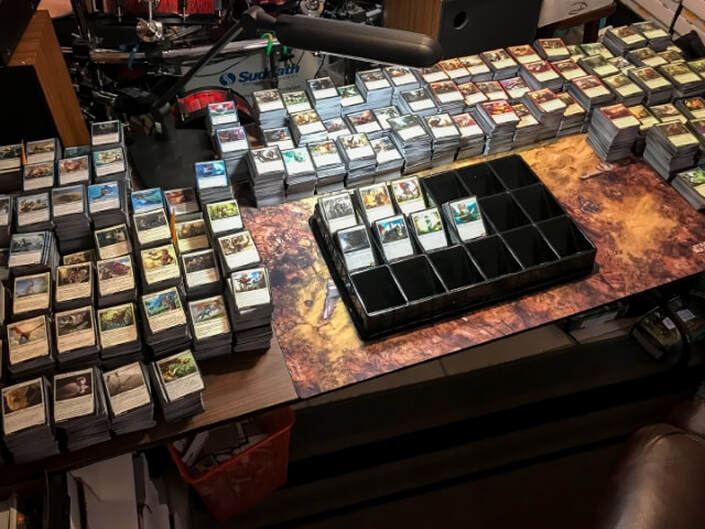
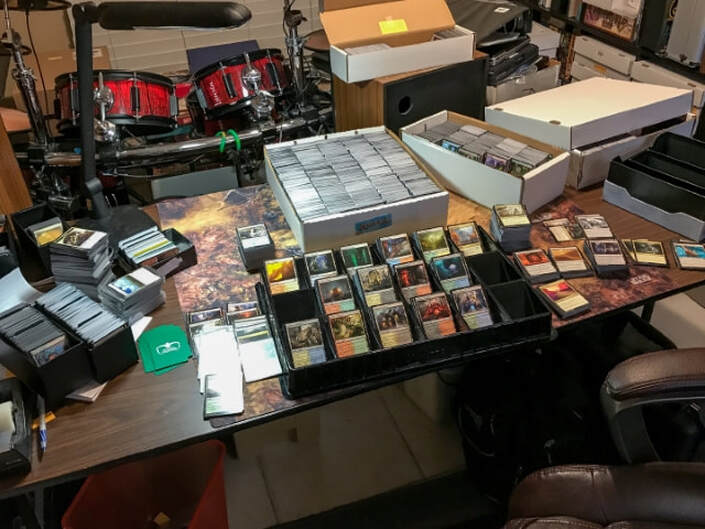









 RSS Feed
RSS Feed